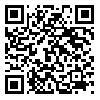Volume 33, Issue 1 (4-2025)
JSSU 2025, 33(1): 8567-8579 |
Back to browse issues page
Download citation:
BibTeX | RIS | EndNote | Medlars | ProCite | Reference Manager | RefWorks
Send citation to:



BibTeX | RIS | EndNote | Medlars | ProCite | Reference Manager | RefWorks
Send citation to:
Dehghan Manshadi M, Arasteh Kani A, Akouchekian M. Investigating the Association between Infertility and Autism Spectrum Disorder (ASD) in Families. JSSU 2025; 33 (1) :8567-8579
URL: http://jssu.ssu.ac.ir/article-1-6321-en.html
URL: http://jssu.ssu.ac.ir/article-1-6321-en.html
Abstract: (132 Views)
Introduction: Autism Spectrum Disorder (ASD) is a complex neurodevelopmental disorder that impacts social interactions, communication, and behaviors, frequently recognized during early childhood. ASD is defined as a spectrum, displaying diverse symptoms regarding type and intensity, shaped by both genetic and environmental influences. Infertility, defined as the failure to conceive after one year of regular unprotected intercourse, can also result from a range of genetic, physiological, and environmental factors. This study examined the association between infertility and ASD, and emphasizing common genetic mechanisms—such as copy number variations (CNVs) and genetic variants—that might influence the occurrence of both conditions.
Additionally, factors like the age of parents, exposure to environmental toxins, and the application of assisted reproductive technologies (ART) may raise the likelihood of both ASD and infertility. In particular, older paternal age has been associated with an increased probability of new genetic mutations in sperm, which could play a role in ASD in offspring. Research findings suggested that epigenetic changes, including DNA methylation and histone modifications, might clarify the role of genetic and environmental factors in these disorders. Preliminary studies indicated that children conceived through ART may face a higher likelihood of developing ASD.
Conclusion: Despite advancements, significant gaps remain in fully understanding these associations, necessitating further research. A deeper comprehension of these links could support the development of targeted interventions, genetic counseling, and improved quality of life for affected individuals and their families.
Additionally, factors like the age of parents, exposure to environmental toxins, and the application of assisted reproductive technologies (ART) may raise the likelihood of both ASD and infertility. In particular, older paternal age has been associated with an increased probability of new genetic mutations in sperm, which could play a role in ASD in offspring. Research findings suggested that epigenetic changes, including DNA methylation and histone modifications, might clarify the role of genetic and environmental factors in these disorders. Preliminary studies indicated that children conceived through ART may face a higher likelihood of developing ASD.
Conclusion: Despite advancements, significant gaps remain in fully understanding these associations, necessitating further research. A deeper comprehension of these links could support the development of targeted interventions, genetic counseling, and improved quality of life for affected individuals and their families.
Type of Study: Review article |
Subject:
Genetics
Received: 2024/11/5 | Accepted: 2025/01/21 | Published: 2025/04/4
Received: 2024/11/5 | Accepted: 2025/01/21 | Published: 2025/04/4
Send email to the article author
| Rights and permissions | |
 |
This work is licensed under a Creative Commons Attribution-NonCommercial 4.0 International License. |







